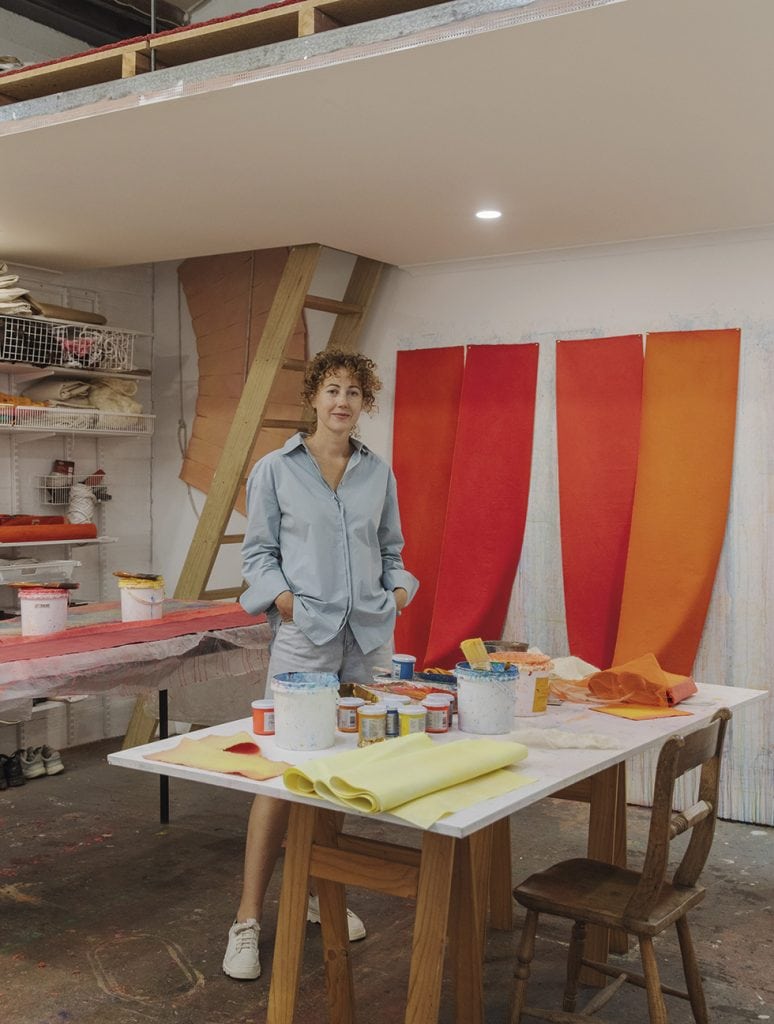Being around like-minded people all doing their own amazing thing was so seductive for Ōtautahi/Christchurch artist Emma Fitts that by the time she finished art school, she was hooked. Since then, she’s tried to put art-making first and has constructed her life around it. That art is both a solo and a shared experience suits her well, and she loves that she gets to be the driver of her own projects.
Extensive research is a key aspect of your practice, Emma — can you tell us more about that? My research is broad and varied; as artists, we’re given a lot of freedom in our research and I like to make the most of it. I’m currently exploring female-oriented art histories, queerness, Modernism, textiles and architecture, among other fields.

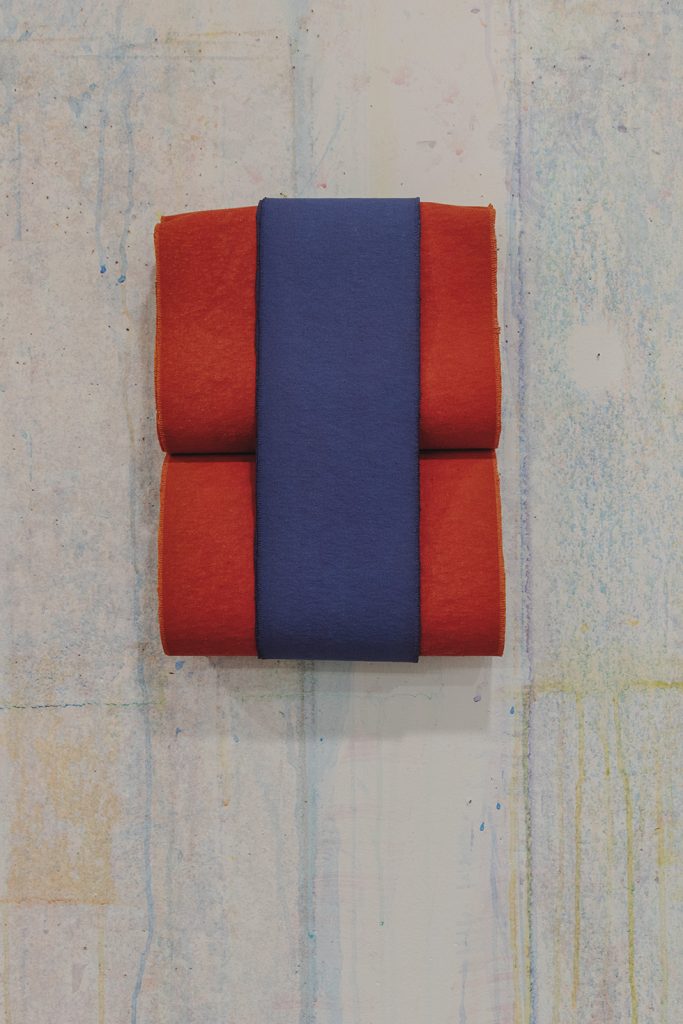
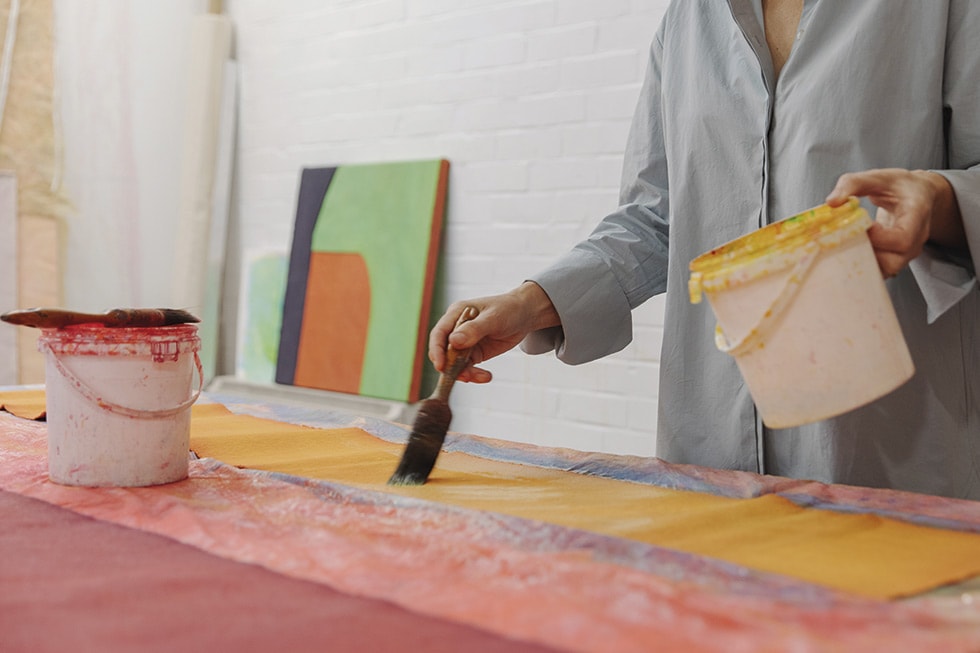
How does your investigation into the roles and visibility of female artists inform your work? As a queer woman artist, I often felt there was a gap in terms of who I could connect with in the history books. Researching lesser-known woman artists has helped me connect to a past I find inspiring personally. It’s often not only their work but also their life story that I find interesting, because that’s the stuff that’s generally left out of the history books and needs illuminating.
I enjoy looking to the social groups of artists and creative thinkers as a way to ensure I’m not looking at people in singularity but with a wider lens that addresses their support networks or the politics of the time. Techniques like collage and creating works that make you think about the entire object and not just the front of the work are important to me.
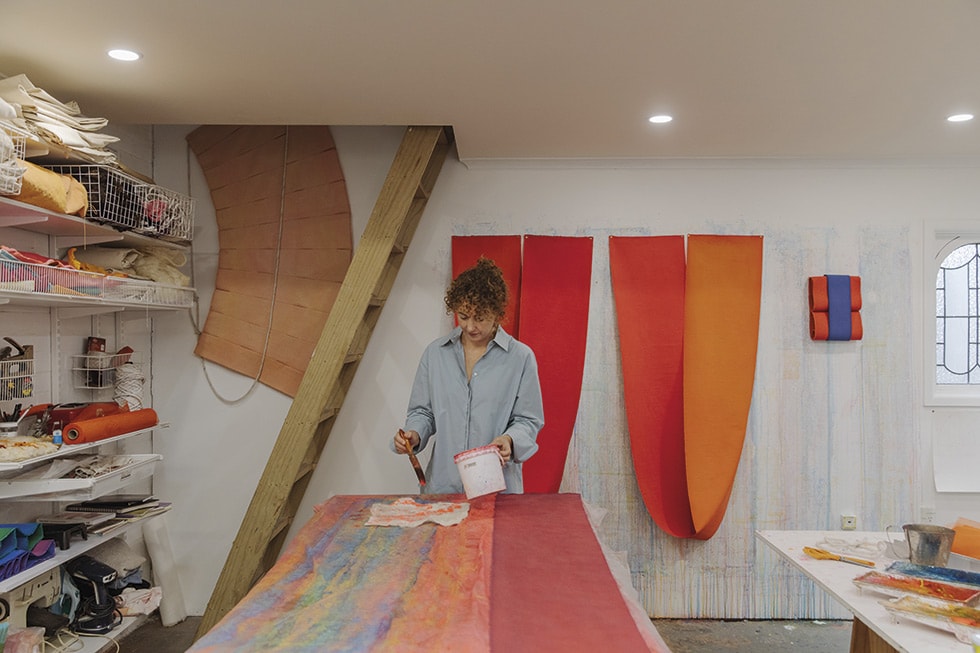
How do you distil your research into a body of work? When I’m researching, I’m looking for physical cues that I can place in work. For instance, when researching New Zealand astrophysicist Beatrice Tinsley, I ended up referencing observatory architecture. I’ve enjoyed looking to Irish designer Eileen Gray — for example, her use of low partition walls and the construction of furniture that can be easily manoeuvred into more than one object. I like applying this thinking to my own work and asking how a painting might be walked around or reconfigured.
Brought to life through painting, sculpture and photography, fabric is a key material for you — what draws you to this medium? Even when I was studying painting back at university, I was more interested in the nature of the canvas itself than what I was putting on it. I like that textiles are such a universal experience. We all have an intimate relationship with and understanding of fabric through our clothing, and I enjoy using the associations of fabric and textiles through recognisable features such as seams, folds, pleats and pockets.
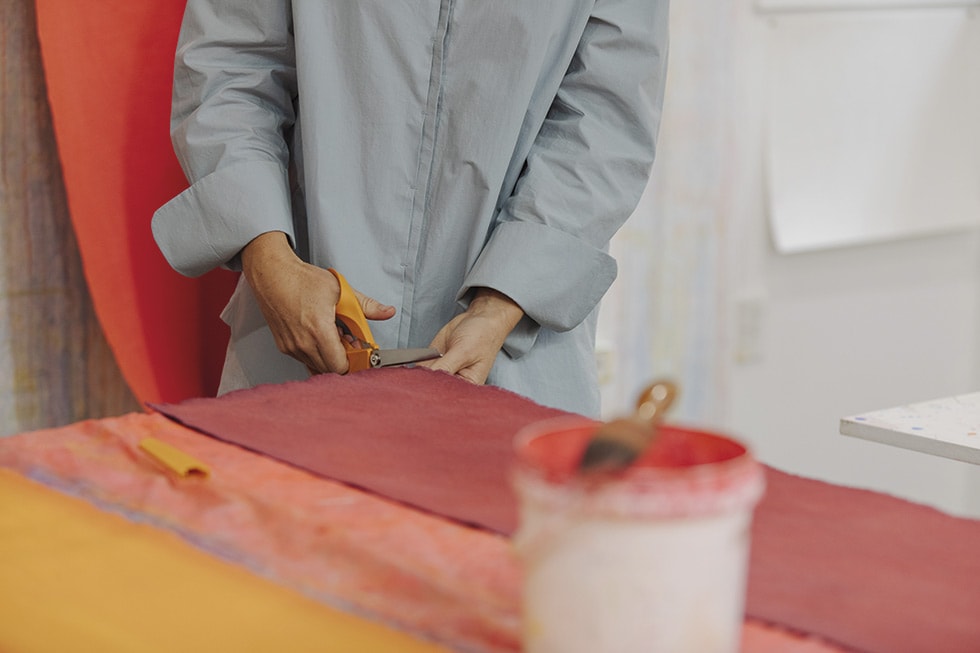
There’s a wonderful vibrancy to the varicoloured assemblages you create — how do you choose your palettes? I like working with bright, sometimes slightly clashing colours and fluorescents. I’m most interested in the sensory and subjective effects that can be achieved, like how a brightly saturated canvas might achieve a kind of afterglow, or how dyed, stretched felt or gauze can help make a work feel lighter or looser.
You have a show coming up at Melanie Roger Gallery in Tāmaki Makaurau/Auckland from April 12 to May 16 — what topics are you presenting? Mary Gartside is one woman I’m looking into for a new body of work — she was a colour theorist in the early 1800s. I like her 1805 essay An Essay on Light and Shade a lot, because she prioritised understanding colour as a sensory experience. She unpacked things like brightness, harmony and contrast, and encouraged her students to see colour as a 3D object; she was forward-thinking for the time in many ways.
I’m also continuing on from my recent work Lapping at Your Door at Objectspace and looking to the garden as a site of both solitude and sociability. For this show, I’m looking into early botanical studies and how the standardisation of colour grew alongside these recordings.
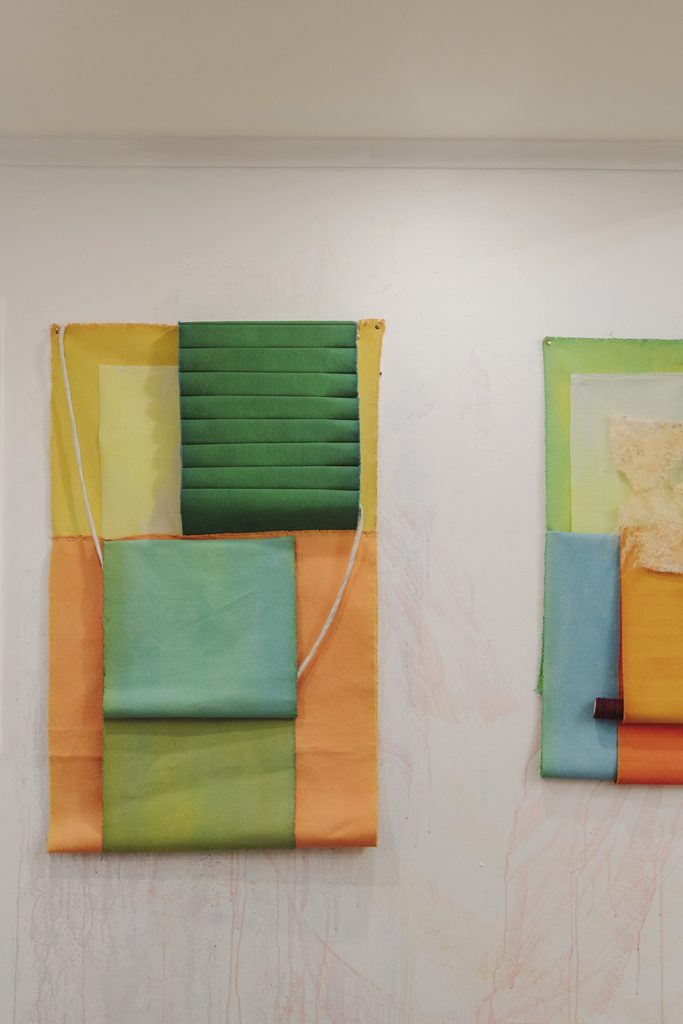
After living overseas for 10 years, what are you most enjoying about being home? I’m loving being back in Aotearoa and feel so lucky to be here. I’m enjoying the space of it all — space for thinking, for exploring and for developing meaningful connections with people and place — and I’m also really enjoying the concentrated discourse around making in Aotearoa and all that has to offer.
@emmafitts
Interview Alice Lines
Photography Nancy Zhou

